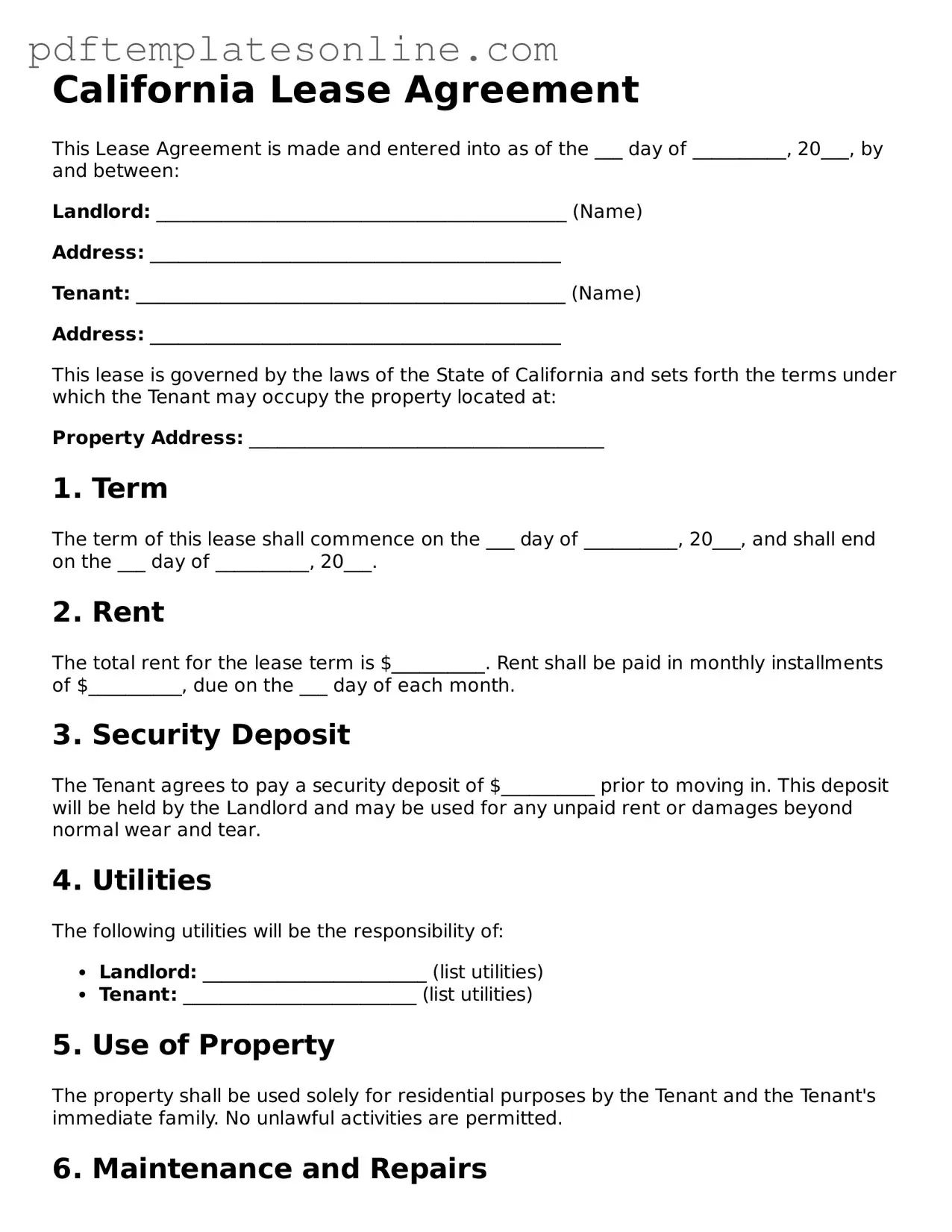When completing the California Lease Agreement form, individuals often overlook critical details that can lead to misunderstandings or disputes. One common mistake is failing to include the correct names of all tenants and landlords. This can create confusion about who is legally responsible under the lease. It is essential that every adult who will reside in the rental property is named in the agreement to ensure clarity and accountability.
Another frequent error is neglecting to specify the lease term. Without a clearly defined start and end date, both landlords and tenants may have different expectations regarding the duration of the tenancy. This oversight can result in disputes regarding when the lease ends and whether it can be renewed.
Some individuals forget to detail the rental amount and payment terms. It is crucial to state the monthly rent clearly, along with the due date and acceptable payment methods. Ambiguities in this section can lead to late payments or disagreements about the amount owed.
Additionally, many people fail to understand the importance of including maintenance responsibilities. The lease should outline who is responsible for repairs and maintenance of the property. Without this information, tenants may assume that the landlord will handle all repairs, while landlords may expect tenants to take care of certain issues.
Lastly, individuals often overlook the need to review local laws and regulations that may impact the lease. California has specific rules regarding security deposits, eviction processes, and tenant rights. Ignoring these laws can result in a lease that is unenforceable or that violates tenant protections.
